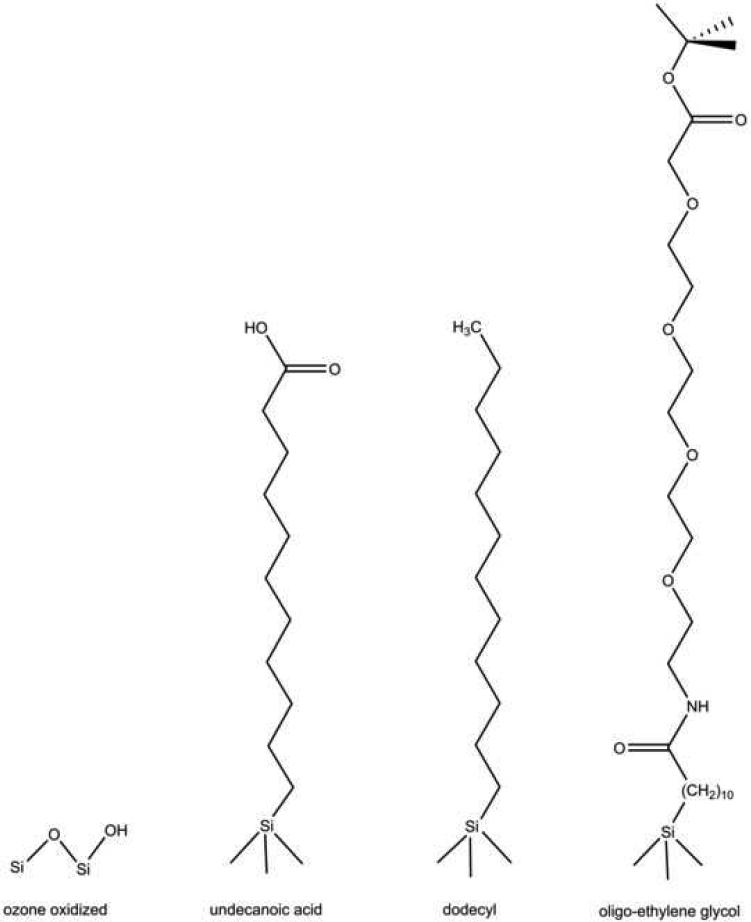Figure 1.
Chemical structures of modified porous silicon surfaces used in the study of primary rat hepatocyte cell adhesion and viability. Ozone oxidation results in a combination of Si-O-Si bonds and surface Si-OH species. Hydrosilylation with undecylenic acid results in an undecanoic acid-terminated surface. Hydrosilylation with dodecene results in a dodecyl-terminated surface. Hydrosilylation with undecylenic acid, followed by bionconjugate coupling chemistry, results in a four-subunit oligo(ethylene) glycol-terminated porous Si surface.

